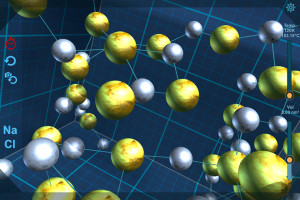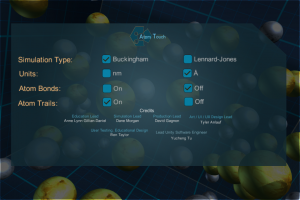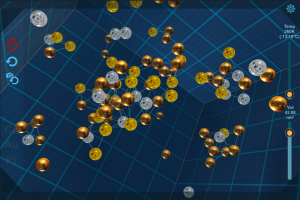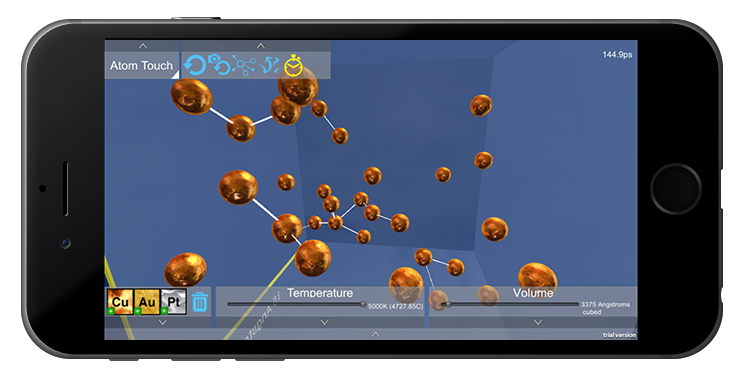Project: AtomTouch
AtomTouch is a molecular simulation app, created through a partnership between UW MRSEC and Field Day Lab, that allows learners to explore principles of thermodynamics and molecular dynamics in an tactile, exploratory way.
Aligned with Standards
AtomTouch can be used to address the Next Generation Science Standards in multiple curricular units, including:
- States and Properties of Matter
- Predicting and modeling how atoms behave as materials change state
- Figure out the most stable structure for a molecule
- Atomic and molecular Theory
- Physical and Chemical Interactions
- Properties of atoms, molecules, and matter
- Size and Scale
Teacher Support
Download the Teacher Guide and the Powerpoint Slides for Class.
Simulation Features
- Lennard Jones and Buckingham Simulation Engine
- Create molecules from Cu, Au, Pt, Na and Cl
- Change thermodynamics properties
- Control time
- Experiment with the potential energy, finding stable geometries
- Watch the process of melting and vaporizing
Screenshots
 |
 |
 |
The Team
Anne Lynn Gillian-Daniel (Education Lead)
Dane Morgan (Simulation Lead)
David Gagnon (Production Lead)
Ben Hansen (Unity Software Engineer)
Yucheng Tu (Unity Software Engineer)
Amirhossein Davoody (Lead Simulation Software Engineer)
Justin Moeller (Software Engineer)
Ben Taylor (User Testing, Educational Design)
Izabela Szlufarska (MRSEC Inderdisciplinary Computational Group Lead)
Eric Peterson (3d Modeling, Animation, UX Design)
Tyler Anlauf (3d Modeling, Graphic Design, UX Design)
Tam Mayeshiba (Simulation Software Engineer)
Henry Wu (Simulation Software Engineer)
Kritika Rai (Software Engineer)
Anup Rathi (Software Engineer)
Source Code
This is a MIT Licensed, Opensource project. We would love to have some help in developing new potentials. Contribute to the code at https://github.com/fielddaylab/atomtouch
Funding
This research was primarily supported by NSF through the University of Wisconsin Materials Research Science and Engineering Center (DMR-1121288)
Funding was also provided by NSF Software Infrastructure for Sustained Innovation (grant 1148011)




